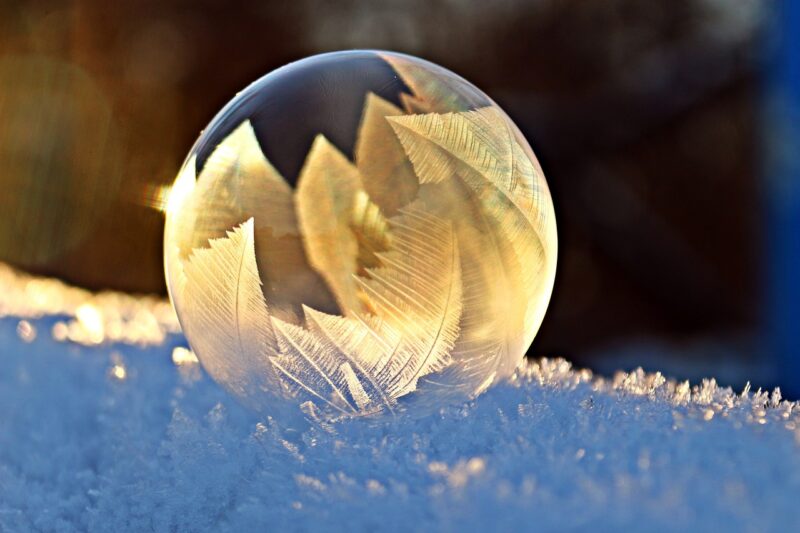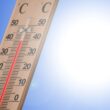How Snow Forms: As winter descends upon us, so too does the beauty and wonder of snow. For many of us, snow is a symbol of the season and a source of joy and excitement. But have you ever wondered how snow forms? In this article, we’ll explore the science behind this magical substance and how it comes to blanket our world in white.
What is Snow?
Snow is a type of precipitation that forms when water vapor in the air condenses into ice crystals in the atmosphere. These ice crystals then grow and clump together, forming snowflakes that fall to the ground. Snowflakes come in a variety of shapes and sizes, with each one unique and intricate in its design.
How Does Snow Form?
Snow forms through a process called deposition, which is when water vapor in the air changes directly into ice without first becoming liquid. This process requires cold temperatures and low humidity, which are typically found in the upper atmosphere. When the conditions are right, water vapor molecules in the air come into contact with a surface, such as a dust particle or a piece of ice, and freeze into ice crystals.
As these ice crystals continue to grow, they begin to form into snowflakes. The shape of a snowflake is determined by the temperature and humidity levels in the atmosphere, as well as other factors such as wind and altitude. The temperature and humidity affect the rate of crystal growth and the shape of the snowflake, while wind and altitude can cause the snowflake to be blown in different directions and to take on a different shape.
Once the snowflake has formed, it falls to the ground, accumulating in a layer of snow. The thickness of this layer depends on the intensity and duration of the snowfall, as well as the temperature and humidity levels. In areas with low humidity, the snow may be dry and powdery, while in areas with high humidity, the snow may be wet and heavy.
The Different Types of Snowflakes
As mentioned earlier, each snowflake is unique and has its own intricate design. Snowflakes can be classified into six different types based on their shape and structure:
- Stellar Dendrites – These snowflakes have a six-pointed star shape and are the most common type of snowflake.
- Plate Crystals – These snowflakes are flat and have a hexagonal shape.
- Column Crystals – These snowflakes are long and thin, with a column-like shape.
- Needle Crystals – These snowflakes are thin and needle-like, with a hexagonal shape.
- Irregular Crystals – These snowflakes do not have a distinct shape or structure and can take on a variety of forms.
- Graupel – This is a type of snowflake that forms when supercooled water droplets freeze onto ice crystals.
The Science of Snow
Snow is not only a beautiful natural phenomenon, but it also has important scientific implications. Snow plays a critical role in regulating Earth’s climate by reflecting sunlight back into space, which helps to cool the planet. Snow also plays a role in the water cycle, as it provides a source of freshwater for plants and animals, as well as for human use.
In addition to its climate and water cycle implications, snow also has an impact on the environment and society. Heavy snowfalls can cause damage to infrastructure, such as buildings, roads, and power lines. Snow also has an impact on transportation, as it can make driving and flying hazardous.
Conclusion
In conclusion, snow is a fascinating and intricate natural phenomenon that forms through a process called deposition. Water vapor in the air condenses into ice crystals in the atmosphere, which then grow and clump together to form snowflakes. The shape of a snowflake is determined by the temperature, humidity, wind, and altitude in the atmosphere.
Snow has important scientific implications, playing a critical role in regulating Earth’s climate and water cycle. It also has an impact on the environment and society, with heavy snowfalls causing damage to infrastructure and affecting transportation.
Understanding the science behind snow can help us to appreciate and respect this amazing substance, and to take steps to mitigate its negative impacts. As winter continues, let us marvel at the beauty of snow and the wonder of nature.
Similar Articles
- Taking Action: Measures to Mitigate Climate Change
- Reforestation: Methods and Strategies for Successful Forest Restoration
- Blue Flag Program: Promoting Sustainable Tourism and Environmental Management
Frequently Asked Questions About How Snow Forms
- What is snow and how does it form?
Snow is a type of precipitation that forms when water vapor in the air condenses into ice crystals in the atmosphere. These ice crystals then grow and clump together, forming snowflakes that fall to the ground.
- What is deposition?
Deposition is the process by which water vapor in the air changes directly into ice without first becoming liquid. This process is required for snow to form.
- What factors influence the shape of a snowflake?
The shape of a snowflake is influenced by the temperature and humidity levels in the atmosphere, as well as other factors such as wind and altitude. The temperature and humidity affect the rate of crystal growth and the shape of the snowflake, while wind and altitude can cause the snowflake to be blown in different directions and to take on a different shape.
- How many types of snowflakes are there?
There are six different types of snowflakes based on their shape and structure: stellar dendrites, plate crystals, column crystals, needle crystals, irregular crystals, and graupel.
- What is the scientific significance of snow?
Snow plays a critical role in regulating Earth’s climate by reflecting sunlight back into space, which helps to cool the planet. It also plays a role in the water cycle, as it provides a source of freshwater for plants and animals, as well as for human use.
- What are some of the impacts of snow on the environment and society?
Heavy snowfalls can cause damage to infrastructure, such as buildings, roads, and power lines. Snow also has an impact on transportation, as it can make driving and flying hazardous.










